Istituto Svizzero invites Fellows and Senior Fellows to connect with the public during their time in Rome, Milan, or Palermo, offering a unique glimpse into the evolution of their practice and research. Through a series of questions, the public gain insights into the Fellows’ ideas, projects, and works.
Niccolò Savaresi (1995) è ricercatore in archeologia classica presso l’Università di Basilea. Il suo campo di studio riguarda la diffusione della ceramica attica nel Mediterraneo. Dal 2022 partecipa agli scavi annuali della necropoli enotria di Macchiabate, in Calabria. La sua precedente formazione archeologica si è svolta principalmente in Italia (Trento, Bologna) e in vari siti europei (Francia, Regno Unito, Grecia). A Roma porterà avanti la sua ricerca, studiando i legami commerciali tra Atene e le popolazioni elleniche dell’Italia meridionale.
Qual è il progetto a cui lavorerai durante la residenza?
La residenza è parte del mio dottorato all’Università di Basilea, in cui studio il commercio della ceramica di Atene tra VI e V secolo a.C. In particolare, a Roma mi soffermo sui meccanismi con cui le immagini dipinte su questi manufatti venivano a far parte delle vite di chi viveva in Sud Italia. Qui erano comunità emigrate dalla Grecia che avrebbero avuto poche difficoltà a comprendere simboli provenienti da un’altra città greca, ma molti oggetti si spostavano anche tra popolazioni autoctone, non-greche. Nel periodo di cui mi interesso, Greci e non-Greci convivevano ormai da secoli, sfumando i confini tra categorie etnico-culturali, ma rimane comunque affascinante ricostruire come prodotti della cultura visiva greca fossero integrati in tradizioni locali antichissime, creando nuovi significati originali.
Cosa ti aspetti dalla residenza a Roma?
Mi aspetto sicuramente molte ore in biblioteca, ma anche molte visite nei luoghi della cultura di Roma, per assorbire quanti più stimoli possibili. Quello che però mi interessa di più è sicuramente lo scambio con gli altri fellows, al tavolo della cucina o in qualche galleria d’arte della città. Parlare con altre/i ricercatrici/ricercatori, così come con le/gli stesse/i artiste/i, mi permette di vedere le cose da una prospettiva diversa da quella della mia limitata esperienza. Occupandomi di immagini, poi, viene a cadere completamente la separazione che potrebbe esserci tra discipline scientifiche e pratiche artistiche.
Come pensi che il dialogo tra arte e scienza possa influenzare il suo lavoro?
Come ho già avuto modo di dire, penso che questo dialogo sia fondamentale. Infatti, la preparazione accademica mette a disposizione delle/dei ricercatrici/ricercatori strumenti e contenuti con cui condurre il proprio lavoro, secondo quelle che sono le tradizioni e i paradigmi accettati in un dato periodo. Tuttavia, queste risorse rischiano di risultare a volte dei limiti, trattenendo le idee entro gli stessi modelli, che si ripetono ancora ed ancora, sempre uguali a se stessi. È esponendosi al nuovo e all’inaspettato che si possono trovare nuove chiavi di lettura, impensabili altrimenti. Nel mio caso, ho studiato come riconoscere immagini antiche, in quali contesti aspettarmele, le tecniche con cui venivano realizzate. Ma è solo parlando con le/gli artiste/i che posso veramente riflettere su questioni che normalmente non appartengono al mio bagaglio: come confrontarsi con il pubblico, i modi in cui ci si forma un repertorio personale, il grado di spontaneità in relazione a tradizione e gusto dominante, e tanto altro ancora.
Cosa influenza il tuo lavoro?
Penso che ci siano molte influenze che vengono dall’ambiente accademico corrente: dalla necessità di guardare ai contesti in cui oggetti, persone, e spazi entrano in relazione, all’urgenza di decostruire narrazioni in cui la cultura greca (o meglio culture greche?) occupi una centralità assoluta, a discapito di esperienze plurali, che nelle fasi passate dell’Archeologia sono lasciate ai margini, in buona o cattiva fede. A livello personale, poi, penso di avere un approccio molto pragmatico ai problemi: la vena romantica della ricerca non si perde mai del tutto, in fondo è quello che spinge a scegliere questo percorso, ma ad un certo punto la passione si trasforma in una professione e bisogna avere anche un approccio realistico ai problemi. Forse è proprio per questo che ho un certo rigetto per teorie strampalate che chiamino in causa alieni e simili. Sono storie affascinanti, che possono anche attirare un largo pubblico alle discipline storico-archeologiche, ma non possono avere posto in un discorso con dignità scientifica.
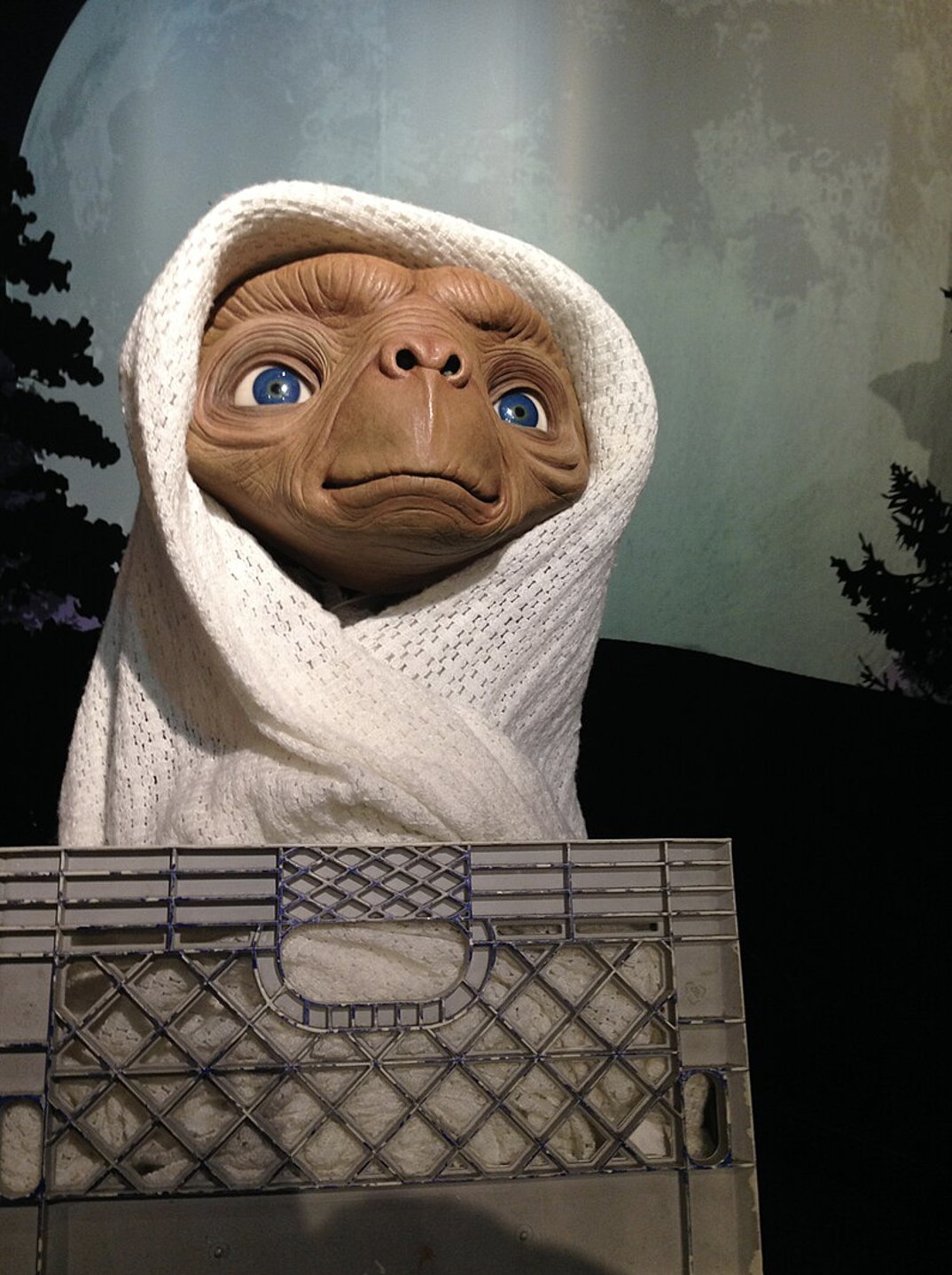
Figura 1 Una rara immagine dell’architetto delle piramidi di Giza
Chi ammiri di più nella Storia?
È difficile avere ammirazione per qualche personaggio storico. Ci sono figure che mi affascinano molto: Alessandro Magno, Adriano, Federico II di Svevia, Marco Polo. Ma non mi spingerei a parlare di “ammirazione”: si tratta di icone della Storia, quasi delle leggende, ma si potrebbe descriverli anche come razzisti, oppressori politici, spregiudicati calcolatori, guerrafondai, integralisti… Se proprio dovessi sbilanciarmi per qualcuno per cui provo più che semplice fascinazione, potrei dire Alcibiade e Cleopatra: entrambi sono personalità politiche del mondo antico che proprio non riesco a comprendere, più leggo di loro e meno mi si chiariscono. Li ammiro non tanto per i loro successi, per i soliti motivi, ma piuttosto li ammiro per essere ancora un mistero per chiunque, tranne che a se stessi. O forse pure a sé.
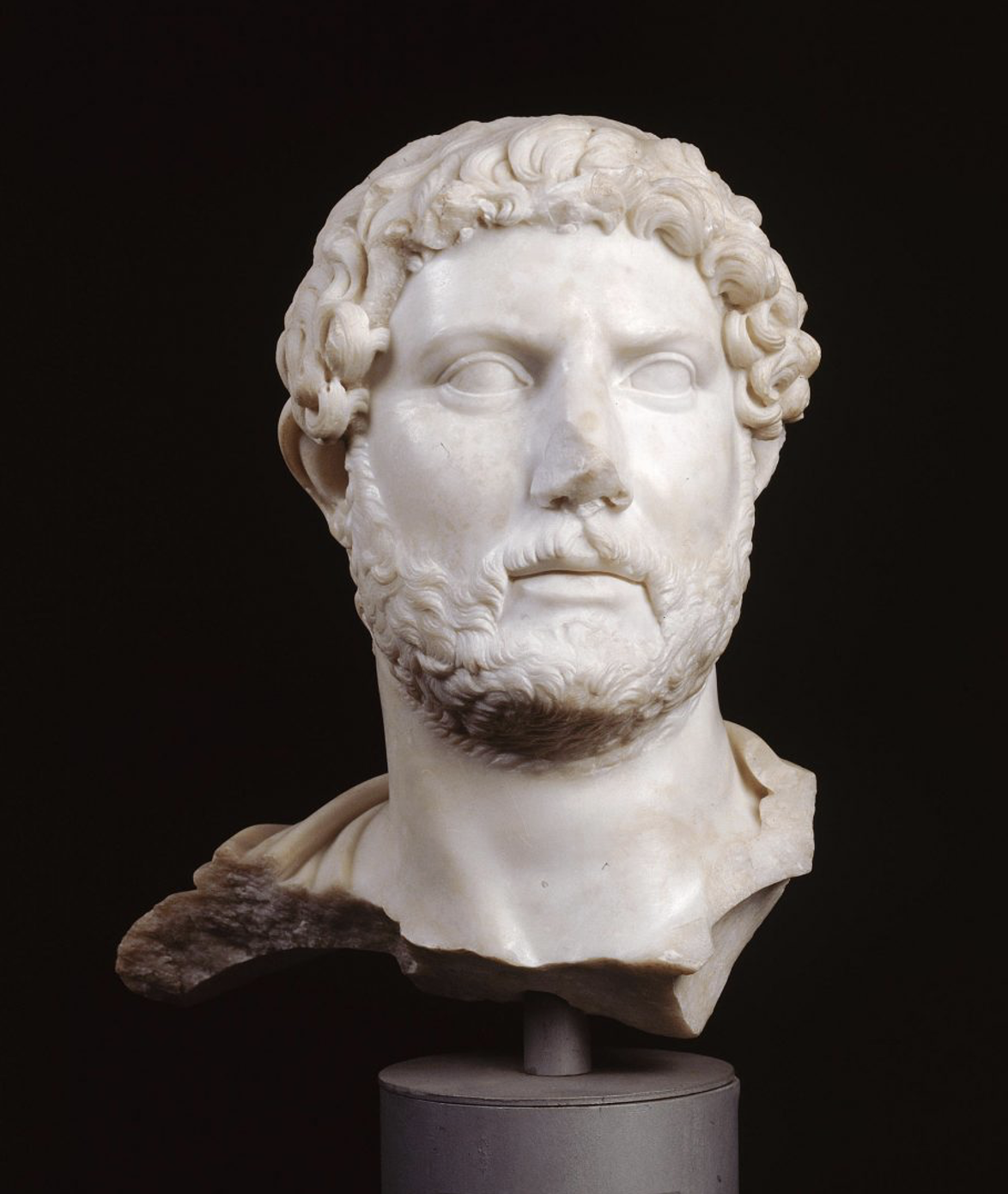
Figura 2 Ritratto dell’imperatore Adriano – Palazzo Massimo
Che musica sta ascoltando attualmente?
Quando ascolto musica, difficilmente mi soffermo su un artista o genere particolare, cerco di spaziare molto, mi piace lasciarmi sorprendere. Per questo una volta ascoltavo molto la radio, dove non hai il controllo su ciò che ti verrà proposto. Ora faccio qualcosa di simile con le piattaforme di streaming musicale, magari selezionando un genere o un artista e lasciando l’onnipotente algoritmo propormi brani. A volte sono insipidi, ma altre volte ci sono piacevoli sorprese. Ultimamente mi piacerebbe approfondire di più la produzione di Tenco e Ornella Vanoni, o magari un po’ di elettronica. Ci sono così tante proposte interessanti che varebbe la pena provare!
Ha qualche rituale/routine durante il lavoro?
Non penso di avere un rituale particolare quando lavoro. Al massimo, salvo ossessivamente tutto quello che ho nella cartella del mio dottorato sul server dell’Università, anche in giorni in cui leggo semplicemente dei libri senza produrre nulla di nuovo. Poi ho anche un modo molto preciso in cui posizionare le finestre dei file sul PC, così da poter avere sotto controllo più files contemporanemente. Ma nulla di scaramantico, penso.
Che eredità speri che la tua ricerca lasci?
Per ora l’unica eredità che vorrei lasciarmi dietro è la tesi di dottorato finita… È ancora un po’ presto per pensare a qualcosa di così definitivo. Mi basta finire bene i progetti che ho ancora in sospeso. Una speranza per il lavoro in cui sono impegnato ora è che possa diventare uno strumento di supporto alla ricerca di altri, specialmente per il fatto di raccogliere in unico testo riferimenti bibliografici e dati di molti materiali che altrimenti sono sparsi in letteratura, disperdendone il potenziale per la ricostruzione storica delle culture della Magna Grecia.
Cosa ti affascina di Roma?
Sarà banale, specialmente per un archeologo, ma direi che Roma mi affascina per il suo Passato, ma come sia al tempo stesso il suo Presente. Qui c’è tutto e tutto sta accadendo sotto i nostri occhi. Anche le rovine più antiche non sono una scenografia muta della vita della metropoli, ma sono il suo sangue caldo, i suoi organi pulsanti. È un serpente che cambia la pelle mentre si morde la coda. E il cortocircuito più affascinante penso sia quello della Chiesa, con liturgie e riti vecchi di millenni dentro templi a dei pagani. Il concetto di millennio è così vasto da essere inconsistente, ma a Roma diventa quasi banale, per la sfacciataggine con cui ti si presenta davanti. Tra un gelato e un pappagallino verde.
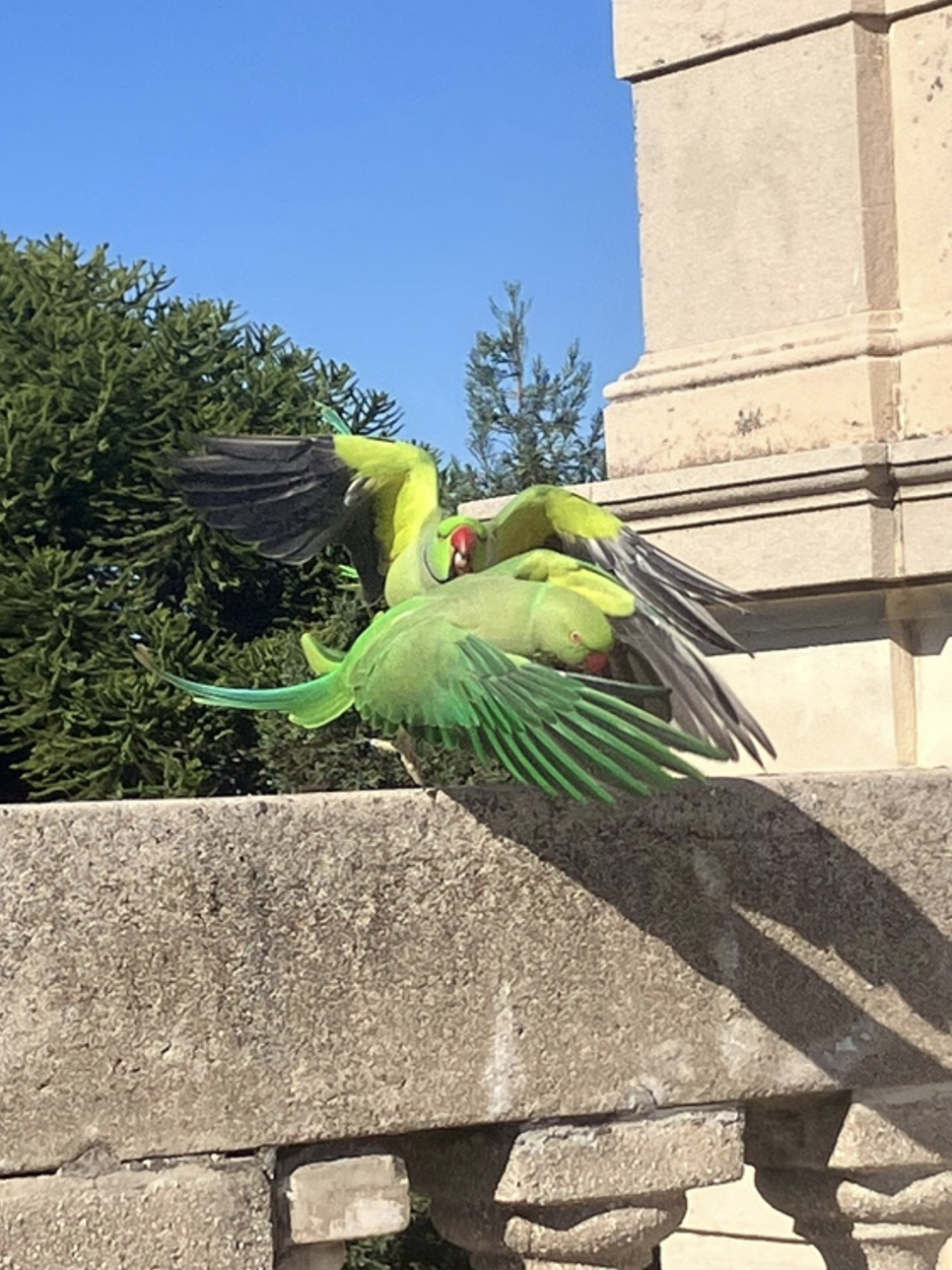
Figura 3 Gli altri “ospiti” di Villa Maraini
Il futuro per te è…
Inaspettatto. Perché ormai ho rinunciato a farmi aspettattive. Oggi più che mai, per chi cerca di lavorare nella Ricerca è impossibile fare piani a lungo termine, talvolta anche quelli più modesti. Cerco di funzionare giorno per giorno, restando aperto alle possibilità che si possono presentare. Ho però il forte sospetto che il mio futuro sarà (anche) migrante; da dove e per dove si vedrà.
Silvia Balzan (1985) is an architect and postdoctoral researcher at the Academy of Architecture in Mendrisio (USI). Her research focuses on the expansion of the Milan underground from the 1950s to the 1990s, analyzing the urbanistic implications of changes made to the master plan in the 1970s. She holds a master’s degree from IUAV in Venice and a Ph.D. from the University of Basel, furthermore, she was a research assistant at ETH in Zurich. In Milan, she will continue her research on the subway as a lens through which to study Milan from the post-war period to Tangentopoli in the 1990s, exploring urban, architectural, socio-economic, and political aspects.
What is the main project you will be working on during your residency?
My post-doctoral research, part of a Swiss National Science Foundation project led by Prof. Dr. Andri Gerber (ZHAW Zurich University of Applied Science), examines Milan’s metro expansion from the late 1950s to the early 1990s. This study focuses on: a) the spatial evolution of the metro lines, beginning with M1 (red) and M2 (green) and culminating with M3 (yellow) in the 1980s, and their impact on newly connected urban areas; b) changes in Milan’s urban plans, specifically the 1970s Variant, influencing the city’s growth; c) debates on mobility, public transport, urban growth, and hinterland development as framed by PSI and PCI political agendas; d) the roles of politicians, businesses, and architects involved in the metro’s construction; and e) the stylistic evolution of metro station architecture, from the rationalist designs by Franco Albini, Franca Helg, and Bob Noorda to Claudio Dini’s postmodern work on M3. Through this lens, the metro serves as both a literal and metaphorical connector, offering insights into Milan’s socio-political and architectural transformation from the post-war era through the Tangentopoli period. This project seeks to write a critical history of the metro as an intertwined entity of architecture and politics.
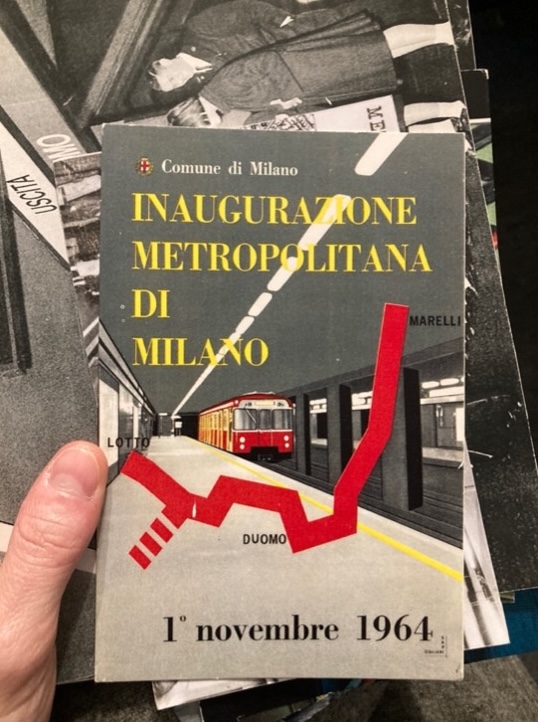
Flyer for the first line (M1) inauguration, 1964. Source: Franco Albini Foundation.
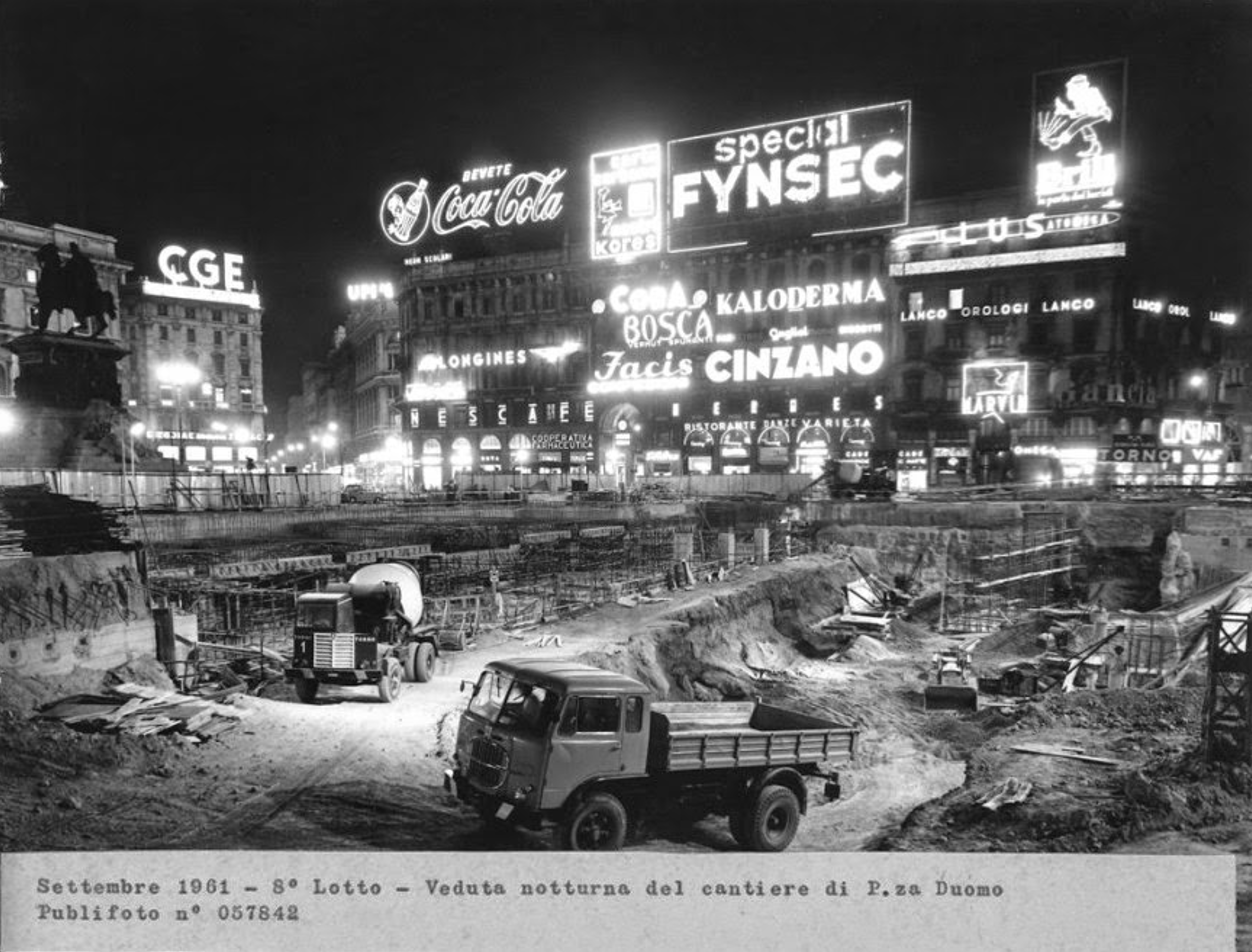
M1 first metro line works in Piazza del Duomo, 1960. Source: Publifoto. Nr. 057842.
What do you expect from the residency?
I foresee the completion of a scientific paper (which will become a chapter of a book) on Milan’s metro history and organizing an event with selected guests to discuss and spread the project.
How can the dialogue between art and science influence your work?
The discipline of architecture has always been considered a hybrid of art and science, being a “science” with an aesthetic outcome. As such, I think the dialogue is already there and inescapable.
What influences your work?
Recent excellent writings from colleagues, esteemed researchers, and educators in my field (architectural history), and a good amount of deep sleep every day.
Who do you admire most in history?
Those who are not afraid to seek the truth despite being inherently ungraspable.
What music are you currently listening to?
Lately, I haven’t listened to music anymore. I prefer podcasts.
Do you have any rituals/routines during work?
I usually work better in the morning by drinking coffee.
What legacy do you hope your research will leave behind?
Perhaps “legacy” is not the correct word. My research could contribute to Milan’s socio-cultural and political historiography and, generally, to the global history of subway developments. As part of a broader project, my research will be published as a chapter in a co-authored volume with the tentative title Red Hinterland. Redefining progressive architectural practices in postwar Milan, between political commitment and shifting social conditions (forthcoming publication in 2025, early 2026).
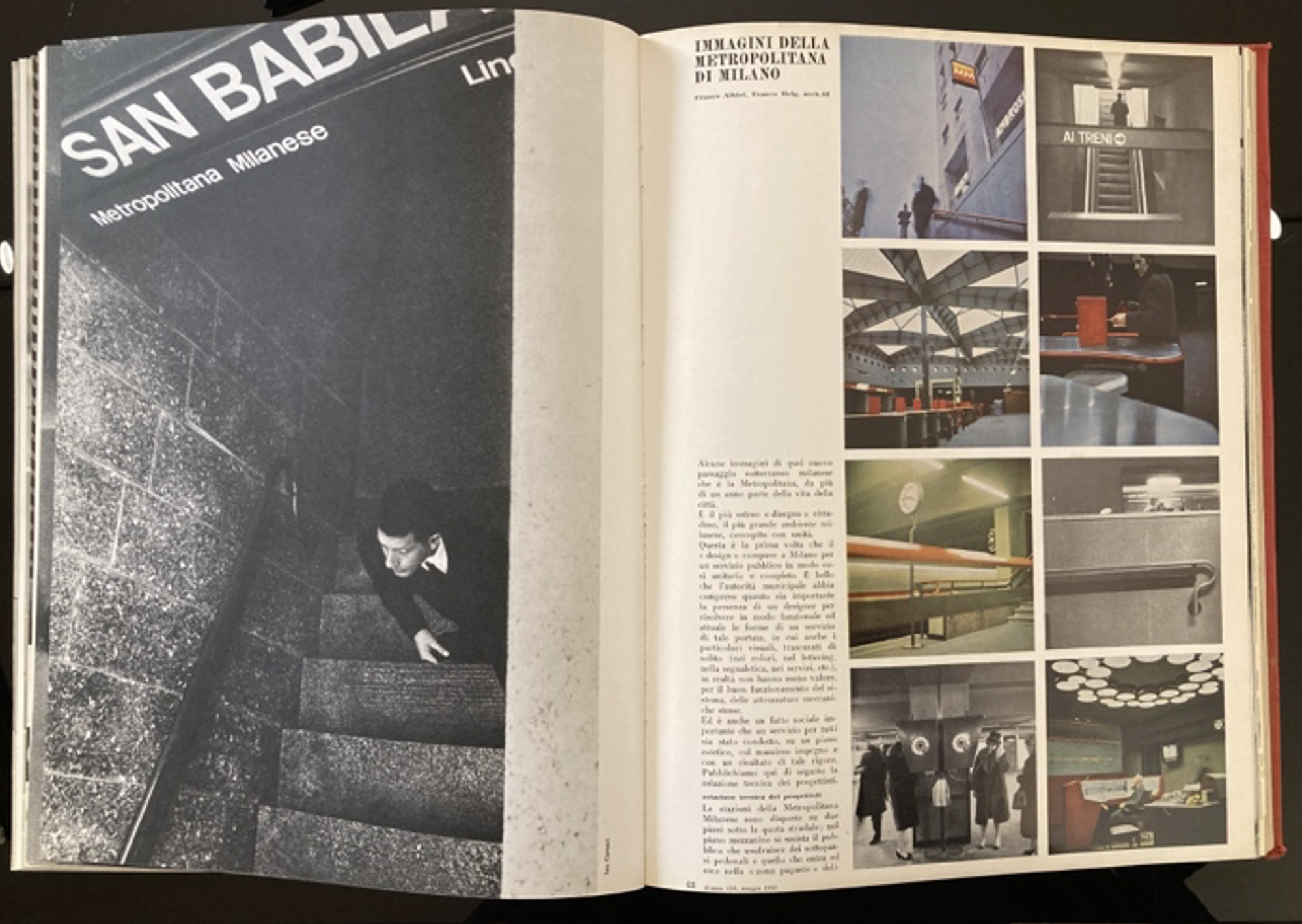
M1 design. Source: Albini, Helg. 1966. “Immagini della metropolitana di Milano” in Domus 438, May 1966. Archivio Ordine Architetti Milano.
What fascinates you about Milano?
Milano is still one of the most “European” cities in Italy. As such, it offers and hosts almost everything you could ask for, from art and architecture to fashion and food.
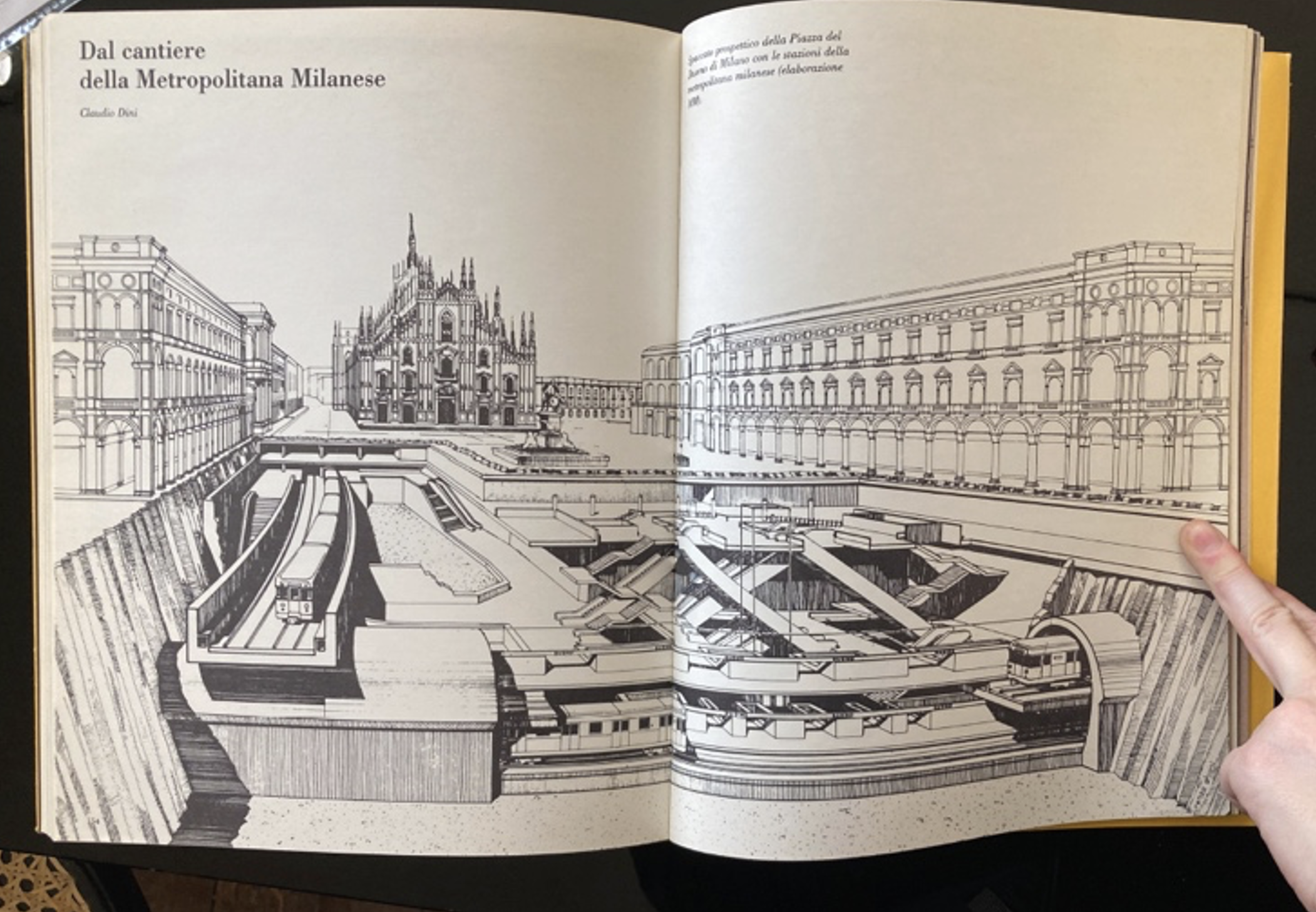
Claudio Dini’s drawing of the M3 metro line under Piazza del Duomo. Source: Dini, Claudio. (1989). Dal cantiere della metropolitana, in Zodiac 1, pp. 154-199.
The future for you is…?
My future will be in academia between architectural history pedagogy and research.
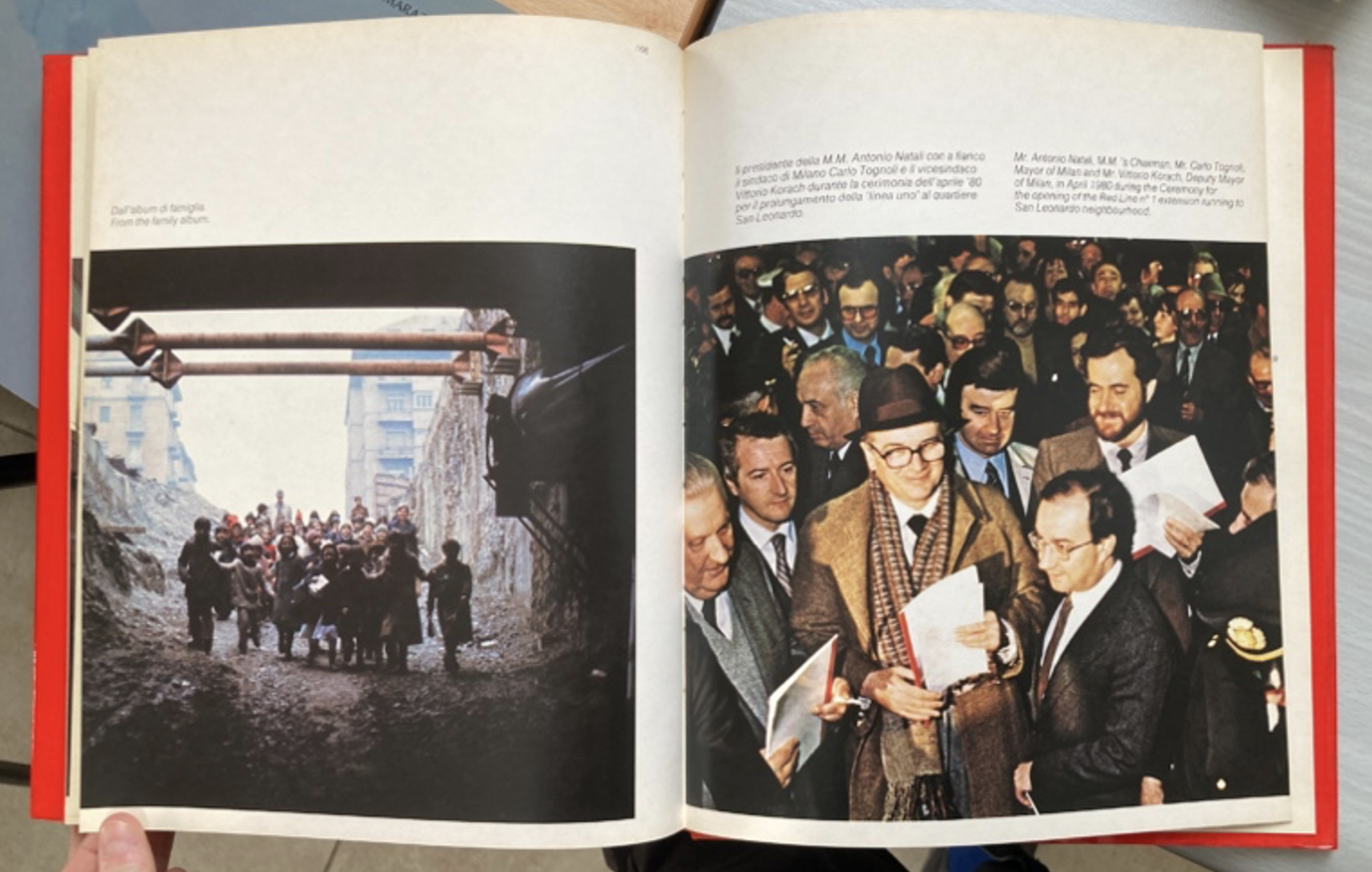
On the right: Mr. Antonio Natali, MM’s Chairman, Mr. Carlo Tognoli, Mayor of Milan, and Mr. Vittorio Korach, Deputy Mayor of Milan, in April 1980 during the ceremony for the opening of the Red Line n°1 extension running to San Leonardo neighborhood. Source: MM. Venticinque anni della metropolitana milanese spa., 1980. Edizioni MM, pp. 166-167
Dominik Müller (1986) is an architect and researcher at ETH Zurich. Within the SNSF project Building Identity: Character in Architectural Debate and Design, 1750-1850, he interrogates the reception of medieval architecture as a prism of imaginaries between national belonging and Orientalist otherness. He holds a diploma from the University of Arts Berlin and has worked for multiple architecture firms in Berlin and Zurich. In Palermo, he will research the distinctive character of Arabic-Norman architecture in travel accounts of the eighteenth and nineteenth centuries.
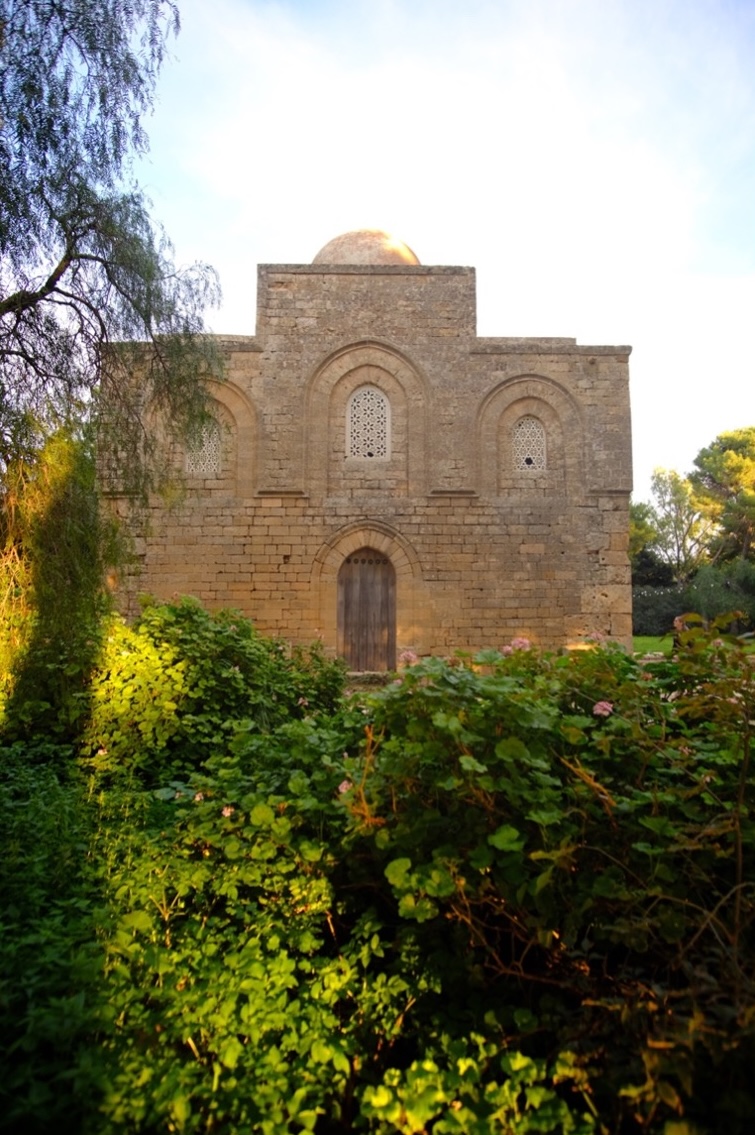
Santissima Trinità di Delia, near Castelvetrano
What is the main project you will be working on during your residency?
The research in Palermo is part of my dissertation on the late medieval architecture of Norman Sicily and its afterlife in travel accounts and theoretical texts of the eighteenth and nineteenth centuries with a focus on the cultural construction of identity and alterity.
What do you expect from the residency?
Probably too much. Since my research is about historical projections on Sicily, I am curious how Sicily talks back. As a place that is recently being touristified, I’m curious how today’s projections reflect the historical ones.
How do you think the dialogue between art and science can influence your work?
I don’t think art and science are completely separated fields. I can find truth in art and fiction in science. Of course, there are different methods of research. And research in the arts can take up many forms. Sometimes research is more embedded into practice, sometimes invisible, sometimes like a parasite. I like that. I want to be the host for my research.
What influences your work?
Mainly those authors who comb history or theory against the grain, decenter Europe, question established terminologies, deconstruct gender, have an antiracist drive or give space to underrepresented voices.
Who do you admire most in history?
Its complexity. The tensions between narrative and evidence, perception and projection, macro- and microcosm. The past definitely connects with the present and yet seems like a totally different world. The further back in time, the more different? Well, that’s not so clear. I believe in spirals, not in lines.
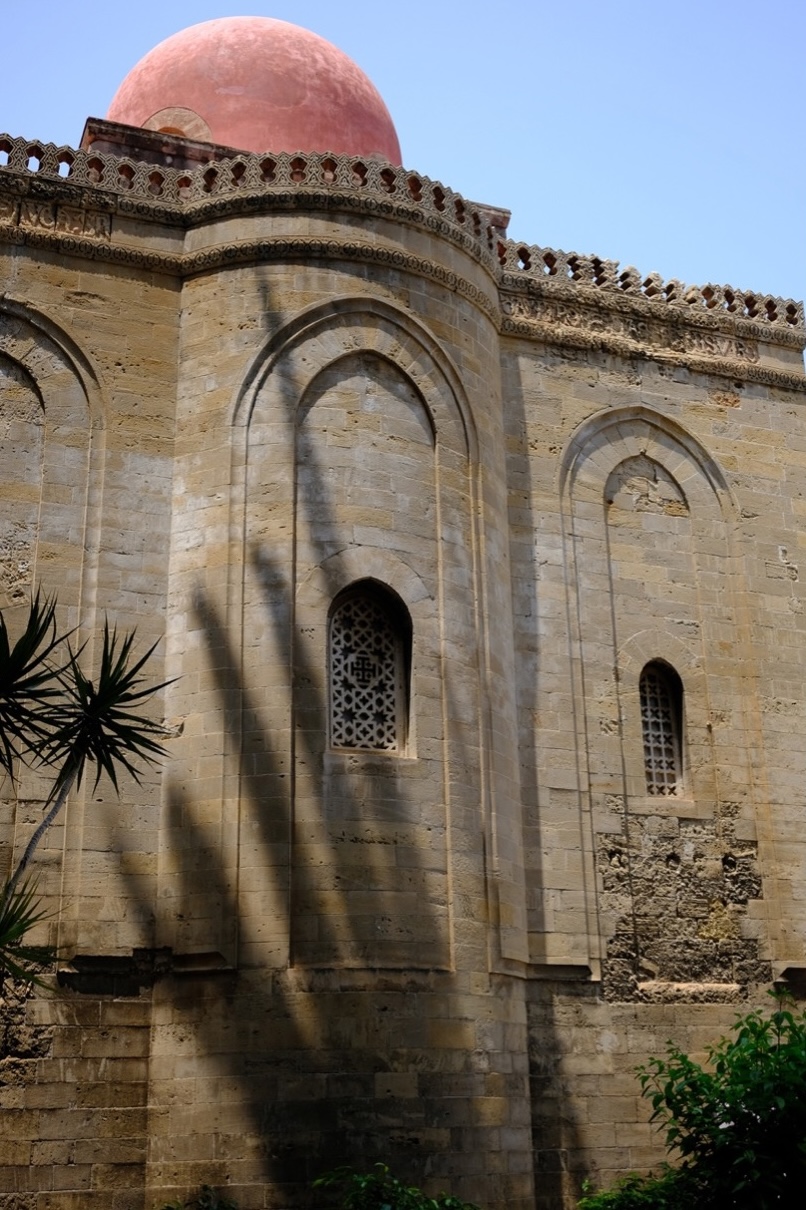
San Cataldo, Palermo
What music are you currently listening to?
I listen to all kinds of music, genres, tempos, depending on the mood and situation. But mostly I listen to atmospheric ambient. And lately, I’m really into Moin. A band which doesn’t want to be a band.
Do you have any rituals/routine during work?
I like to have a break on the roof terrace of Palazzo Butera. You can see the sun, the mountains and the sea. What else do you need?
What legacy do you hope your research will leave behind?
I hope my research will speak to diverse audiences, start conversations and leave behind an interesting set of questions. Questions are more open and humbler than answers.
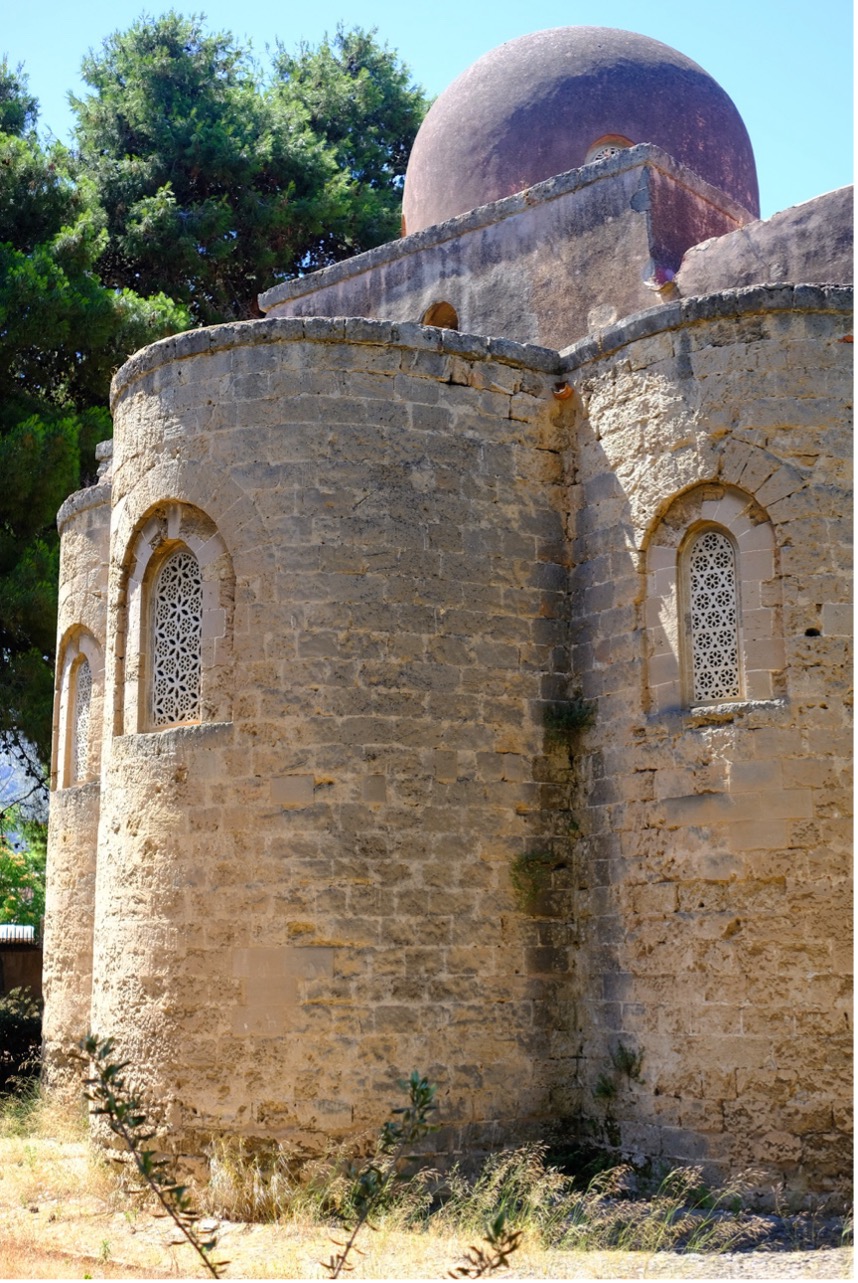
San Giovanni dei Lebbrosi, Palermo
What fascinates you about the city of Palermo?
I’m very excited about Sicily and Palermo is a magnificent city. So many empires have conquered the island. You can taste it in the food, hear it in the language, and see it in the architecture. Sometimes you discover a fragment. Spolia, like a reused arch, different types of stones. The material presence of deep history in a city that does not seem to care.
The future for you is… ?
…contingent on the present and the past.